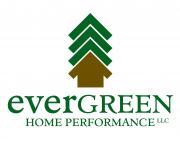What’s a Building Envelope?
Once upon a time, all we asked of our buildings was that they keep the wild animals out. These days, we expect a bit more. Rain in the kitchen isn’t okay, and neither is paying an arm and a leg to stay cool when the weather's hot, or warm in the dead of winter. Well-designed homes accomplish those lofty goals with a good building envelope.
Simply put, the building envelope is the line between outside and inside. Your home’s walls – from the foundation right up to the roofline – are part of it, and so are your windows, your insulation, and your exterior doors. You should be able to control that barrier, opening a window to let in a nice breeze, or closing it tight to keep warm, conditioned air inside longer.
Unfortunately, most building envelopes are riddled with leaks, holes, and “sort of” spaces that are neither completely inside nor completely outside. Basements and attics are a prime example of this last category: used for storage and mechanicals, but rarely conditioned and often haphazardly insulated. By blurring the line between inside and outside, these leaky spaces make your home less comfortable, more expensive to heat in the winter, and more expensive to cool in the summer.
So what to do about a leaky building envelope?
Evergreen Home Performance starts with big-picture assessment of your home to find out how your house works and how it could work better. From that, we engineer comprehensive improvements like insulation, air sealing, and basement encapsulation to meet your goals. Once we’ve installed those improvements, we repeat the initial assessment to confirm that your house performs better.
Want to learn more? Schedule a FREE one-hour energy consult and learn how home performance can help you gain comfort and cut costs.



























